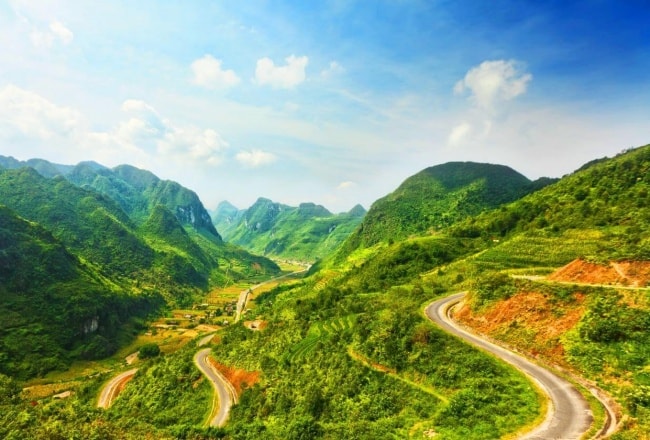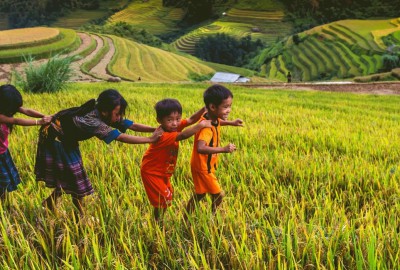If you are planning your Vietnam vacation, but have no idea about where to go, Yen Bai might be in your consideration. Pristine nature and diverse cultures of local ethnic minority groups will enchant your eyes when visiting Yen Bai.
Mu Cang Chai Terraced Fields

The spectacular rice terraced fields in Mu Cang Chai will conquer the heart of every visitor to come 300 km Northeast of Hanoi, Mu Cang Chai is the most renowned district of Yen Bai province. The district is home to about 700 hectares of terraced rice fields primarily situated on three villages: La Pan Tan, Che Cu Nha, and De Su Phin. Rice terraces stretching from the top of mountains down to small streams create a picturesque landscape. Mu Cang Chai has been drawing many domestic and foreign visitors thanks to its majestic scenery and awe-inspiring beauty.
Mam Xoi Viewpoint (Sticky rice hill), Mui Giay, and La Phan Tan are considered as the best sightseeing spots to take stunning photos in Mu Cang Chai and these sites are easily approachable by motorbike or walking.
Khau Pha Pass

Khau Pha pass that connects Van Chan district and Mu Cang Chai district of Yen Bai province is said to be one of the most dangerous roads in Northern Vietnam. Few climbs have a formidable reputation as Khau Pha. Along its way of 30 km, there are tight and blind curves that make biking on the passing fun and exciting. The pass is more dangerous as it is often shrouded in drifting clouds and fog. From the pass, you can admire a magnificent view of tiny houses dotted on rice terraces fading far into the distance.
Thac Ba Lake

Featured as the largest Vietnam’s artificial lake, the poetic Thac Ba covers an area of 23,400 hectares. Besides the function in protecting the environment, the lake has become an appealing tourist spot of Yen Bai thanks to its impressively clear blue water and stunning cave systems such as Thuy Tien Cave and Xuan Long Cave. From the peak of Cao Bien – the largest and longest mountain range, visitors have the chance to get a bird’s eye view of the misting Thac Ba Lake in the dawn.
Muong Lo Valley

Nghia Lo is home to about 30,000 people who gather in the flat and immense valley named Muong Lo. The valley is surrounded by the endless ranges of lush mountains and is the habitat of several ethnic minority groups with their diverse cultures and customs. From a higher position, the valley looks like a gigantic yellow saucepan embraced by streams and cloud-covered mountains.
Dong Cuong Temple

Known as Mau Thuong Ngan, Dong Cuong Temple is about 50km from the city of Yen Bai. It is one of the two largest temples in the upper reaches of the Red River in Yen Bai. The temple worships Ve Quoc and the national heroes who drew the Nguyen Mong (Mongolian) aggressor away in the 13th century. Every year, there is a festival that is held on 27th and 28th February to pray for a lucky and prosperous year. There are a variety of traditional games such as singing, shuttlecock, wrestling, and dancing also take place at this festival.
Suoi Giang

Suoi Giang that is 20km from Nghia Lo Township is the homeland of old-age tea trees. Located on the height of 800-1000m above the sea level, Suoi Giang is an ideal place for relaxation with a mild climate. Further, it is also suitable for cultural explorers who desire to learn about the authentic cultural life of the H’Mong ethnic group. The area near the village of Suoi Giang is worth your visit as it is the place you can see tea trees which are 100 – 400 years old. Local people believe this tea is medicine and call it “medical tea”. Small villages and wooden houses of Thai and Hmong people create peaceful scenery.

























